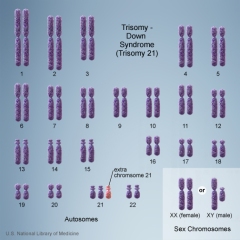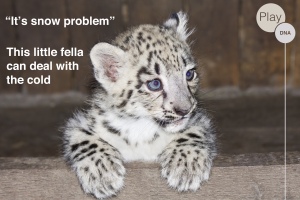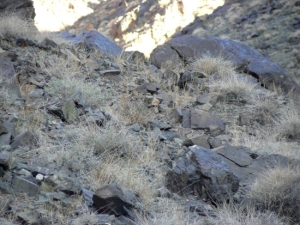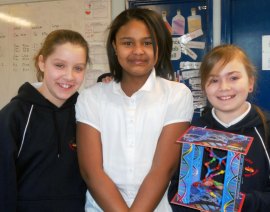
(L-R) Morgan, Lara and Brooke, who set us three excellent and thought-provoking questions!
It’s time for the third and final question in our ‘Ask The Scientist’ series – a selection of questions posed by the students of Irchester Community Primary School, Northants.
Three weeks ago we tackled a really insightful question from Brooke on why DNA is in a double helix.
Our final question comes from Lara, and it’s a particularly sensitive question that many of us may have wondered at some point, but be afraid to ask for fear of causing unintended offence.
Why do people who have genetic disorders such as Down’s syndrome look similar physically?
– Lara, aged 11
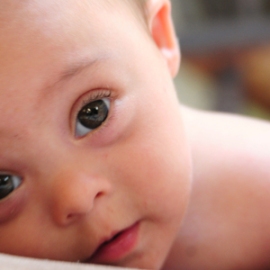 It is true that there are certain genetic disorders that it’s relatively easy to spot if a person has. Down’s syndrome is one such condition. People with Down’s syndrome tend to share a number of physical characteristics, although it’s important to recognise that not every individual with the syndrome will have them all.
It is true that there are certain genetic disorders that it’s relatively easy to spot if a person has. Down’s syndrome is one such condition. People with Down’s syndrome tend to share a number of physical characteristics, although it’s important to recognise that not every individual with the syndrome will have them all.
These characteristics may include almond shaped eyes that slant upwards and outwards, small ears and nose and a flat nasal bridge. People with the syndrome also tend to be shorter than average with poor muscle tone and have short, broad hands with a single crease across the palm.
Down’s syndrome (also known as Down syndrome) is a genetic condition where a person inherits an extra copy (or part) of one chromosome. People with the syndrome have three copies of chromosome 21 (called a trisomy) rather than the usual two.
Chromosomes are the structures that our DNA is stored in, and our DNA contains the genes that provide the instructions to build our bodies. It is differences in our DNA that makes us all unique, inside and out. As our DNA controls how we develop, having this extra bit of genetic material slightly alters the way Down’s syndrome babies grow in the womb of their mother, changing the finely tuned balance of the body.
The result of this is the characteristic physical features we see in Down’s syndrome. People with Down’s syndrome will also have varying degrees of learning disabilities, from mild to very severe. Around 750 babies with Down’s syndrome are born in the UK each year. Down’s syndrome affects all ethnic groups equally, although slightly more boys are born with Down syndrome than girls.
Despite the characteristics they share in common, most importantly, like me and you, every individual with Down’s syndrome is unique. If you look past the characteristic traits we’ve described, you will see that people with Down’s syndrome, just like you and me, will inherit their looks and general characteristics from their mum and dad. Have a look at some of these family images we’ve pulled together below and you’ll see that each and every child is also a beautiful son or daughter, with all the typical family characteristics such as hair and eye colour, face and nose shape and smile.
Just like you and me, they are also all different and all unique.
x


